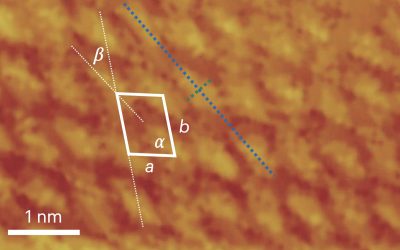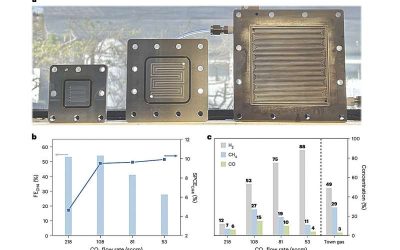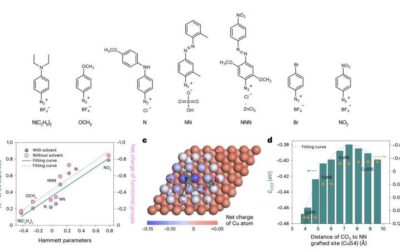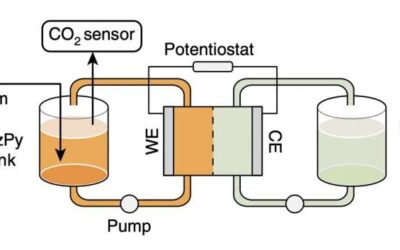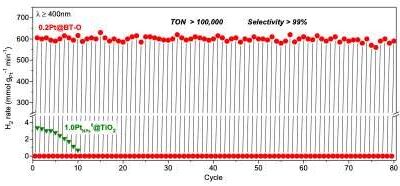Urea, with the formula CO(NH2)2, is a chemical compound that is widely used in a range of sectors, including manufacturing, agriculture and various industries. Conventionally, this compound is produced via a two-step process that entails the synthesis of ammonia from...
Materials Science
Molecular engineering approach could boost hydrogen evolution reaction activity by up to 50 times in alkaline media
Electrolyzers are devices that can split water into hydrogen and oxygen using electricity and via a process known as electrolysis. In the future, these devices could help to produce hydrogen gas from water, which is valuable for a wide range of applications and could...
Promising triazole molecular catalyst enables efficient electroreduction of carbon dioxide to methane
The efficient conversion of carbon dioxide (CO2)—one of the main compounds contributing to climate change—into useful fuels and chemicals is a long sought-after research goal. Recent studies have introduced various catalysts that could be used to initiate the...
Towards the selective and energy-efficient synthesis of ethylene via carbon dioxide reduction
The synthesis of carbon-based chemicals via the electrochemical reduction of carbon dioxide (CO2) has become the key objective of numerous recent energy research efforts. While these studies have yielded promising results, enabling the production of various widely...
Using cryogenic electron microscopy to study the lithium SEI during electrocatalysis
Ammonia (NH3), the chemical compound made of nitrogen and hydrogen, currently has many valuable uses, for instance serving as a crop fertilizer, purifying agent, and refrigerant gas. In recent years, scientists have been exploring its potential as an energy carrier,...
Using cryogenic electron microscopy to study the lithium SEI during electrocatalysis
Ammonia (NH3), the chemical compound made of nitrogen and hydrogen, currently has many valuable uses, for instance serving as a crop fertilizer, purifying agent, and refrigerant gas. In recent years, scientists have been exploring its potential as an energy carrier,...
A strategy to fine-tune the properties of Lewis bases for electrochemical carbon dioxide capture
In recent years, many engineers and material scientists have been trying to develop sustainable energy solutions that could help to mitigate climate change on Earth. This includes carbon capture technologies, which are specifically designed to capture or absorb carbon...
A new method to dehydrogenate alkanes at ambient conditions
The chemical term alkanes, or paraffins, refers to organic compounds that consist of single-bonded carbon and hydrogen atoms, such as methane, ethane, and propane, and several other hydrocarbons. Over the years, alkanes have become widely used in organic chemistry,...


